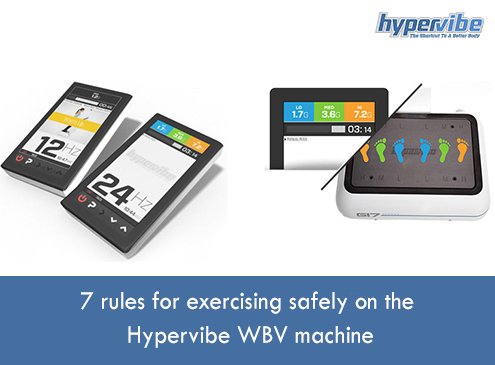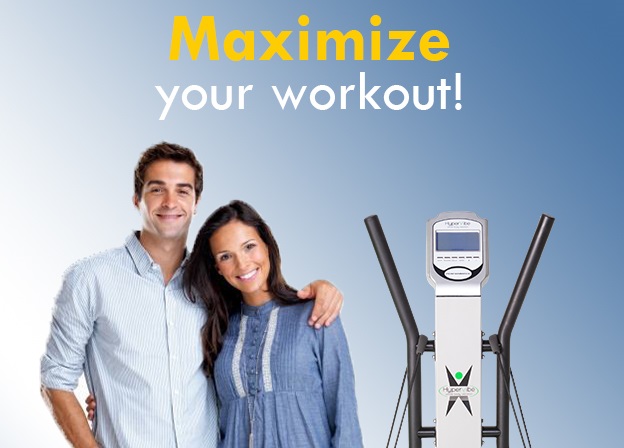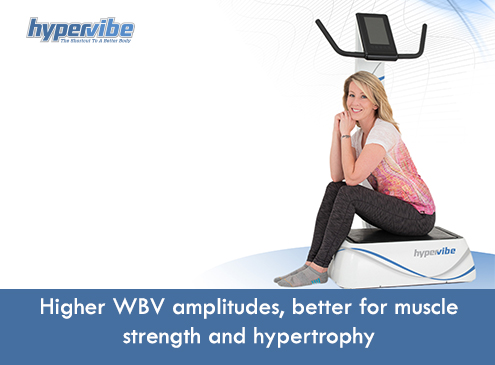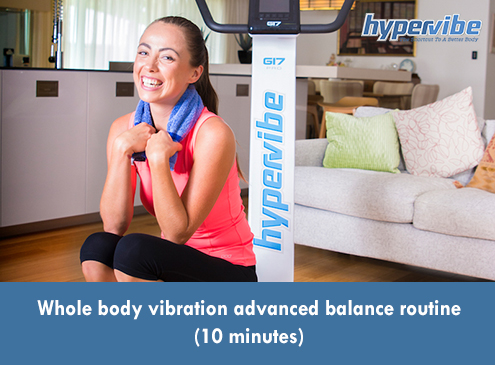7 Hypervibe WBV Safety Rules to Follow
People who are new to whole body vibration and try the Hypervibe platforms for the first time may think these machines aren’t safe for long-term use, because of the high-intensity vibration waves they generate.
If you arrived at this page believing that exercising on a vibrating plate is dangerous, we recommend reading our previous entry on Safety and convenience of WBV machines, and checking our articles on the benefits of whole body vibration. You’ll see that the great majority of research papers on vibration training and therapy mention no side effects or complications, regardless of the intensity or length of the WBV sessions.
However, there are also misleading articles out there that promote the idea that this form of exercise causes high levels of head vibration and can affect the bones, joints, and muscles severely. These articles compare vibration machine workouts to occupational whole body vibration, which can, indeed, lead to unwanted health issues.
As explained in the previously mentioned article, whole body vibration exercise differs to occupational whole body vibration in that it is performed:
- For brief periods, typically 10-minutes.
- Intermittently with adequate rest periods.
- Using a limited frequency range not lower than 5Hz and not exceeding 60Hz.
- In a standing posture most of the time – allows the maximum amount of joint and muscle movement to absorb the vibration while joints are in a favorable posture.
WBV is not a new science, and researchers all over the world have spent years studying it and developing machines that can help users improve their overall health and fitness levels. Also, keep in mind that whole body vibration machines are widely used for therapy purposes; if they weren’t safe, we would know.
So for those of you who are willing to give WBV a try, here are 10 rules for exercising safely.
Rule 1: Whole body vibration workouts should be short and intense. Avoid exercising on a vibration machine for more than 10-15 minutes in a row. If you want to do a longer workout, take frequent breaks.
Rule 2: Don’t increase the frequency or intensity just to prove that you can tolerate really tough workouts. Use a limited frequency range – not lower than 5Hz but not higher than 45Hz to avoid any potential side effects.
Rule 3: If you feel excessive or uncomfortable amounts of head vibration, stop immediately and change the position or use these recommendations for minimizing the vibration: add a small, non-slip mat top the top of the platform, bend your knees a bit more when in standing position and reduce the amplitude by moving your feet or hands to a lower number on the plate.
Rule 4: Know your limits and don’t push yourself too hard at the beginning. Don’t work beyond your capacity and stop immediately if you feel pain. If you’re following a routine and the exercise’s intensity or duration is too high, stop when you tire. You will see improvements if you regularly practice this form of physical activity, but you don’t have to master it from the first sessions.
Rule 5: If you’re doing balance exercises, use a chair or the platform’s handles for additional stability. Also, if you’re doing weighted WBV exercises, such as biceps dips or overhead extensions using dumbbells, make sure to start with light weights.
Rule 6: For beginners, it’s recommended to start with exercises in a standing posture, as these allow for a better absorption of vibration. Ensure that your feet are stable on the platform and don’t use shoes unless necessary. A rubber bottom is better for preventing slipping.
Rule 7: Keep your eyes open while exercising to avoid loss of balance and avoid positions with the head down towards the floor if you have inner ear conditions or suffer from dizziness. You may experiences floaters if you adopt a position that causes too much head vibration, and in this case, it is necessary to reposition immediately. Dizziness may occur as a result of vestibular issues or if you have low blood sugar levels.
We recommend getting familiar with the rules of WBV training before starting any exercise program and consulting a health professional before using the machine. Some conditions, among which gall or kidney stones, recent fractures, epilepsy, some metal implants, and acute inflammatory conditions represent contraindications for this form of exercise.
If you have questions, feel free to post them below or join our Facebook community and share your thoughts with us there!















